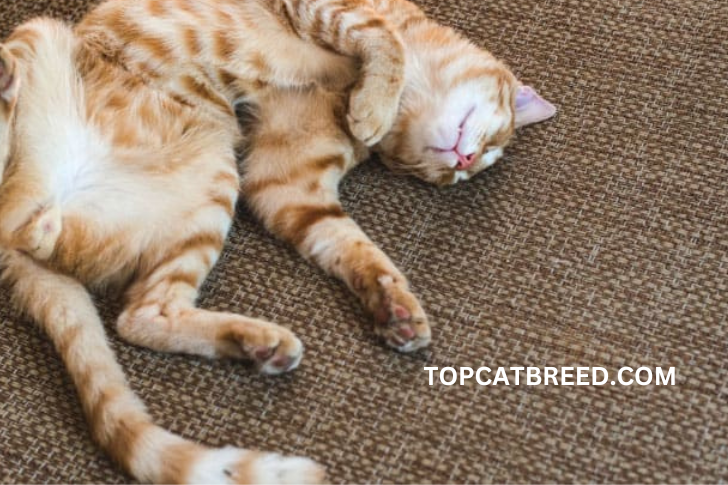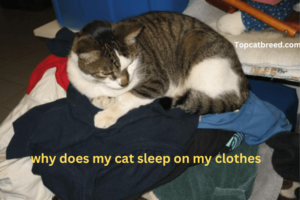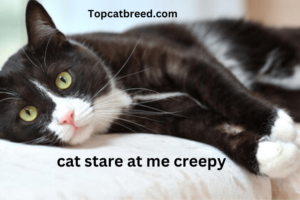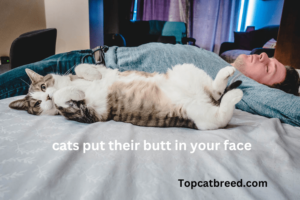Ever wondered, “Why does my cat twitch in her sleep?” Well, we’ve got the answers! Cats, much like us, go through different sleep stages, including a dreaming phase called REM (Rapid Eye Movement). When your cat twitches, wiggles her nose, or lets out tiny meows during sleep, it’s likely just a cute expression of her dreams. Kittens, on the other hand, have a special sleep phase called activated sleep, making their sleep movements more playful.
But, sometimes, twitching can be a response to things like Dreams, Developing nervous system, fleas, allergies, Parasomnia ,Normal sleep cycles or even muscle spasms. In this simple guide, we’ll explore 9 reasons why does my cat twitch in her sleep We’ve got you covered, from normal dreaming to serious health concerns; by the end, you’ll know why your cat twitches in her sleep, giving you a deeper understanding of your furry friend’s well-being.
9 Reasons of why does my cat twitch in her sleep
1-Dreams
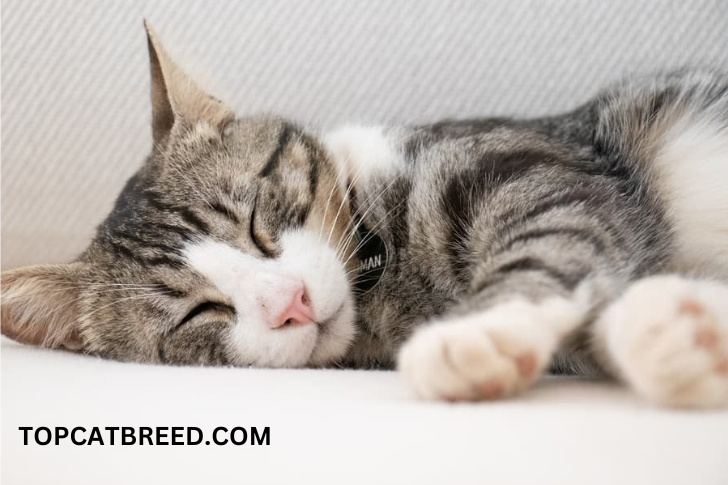
One of the common reasons behind why does my cat twitch in her sleep lies in the fascinating realm of dreams. Have you ever observed your feline companion gently twitch or subtly move during a profound sleep? It’s like having a front-row seat to their dreams. Similar to humans, cats undergo various sleep cycles, including Rapid Eye Movement (REM), where dreams unfold. These charming indicators, from twitches of the nose and whiskers to the occasional meow, provide a delightful insight into your cat’s nocturnal adventures. As long as these movements don’t accompany signs of distress, consider them endearing elements of your cat’s regular sleep routine.
Cats, much like humans, have a diverse range of dreams during their REM sleep. You might notice their nose twitching, whiskers quivering, or even a subtle meow escaping. These actions are indicative of their involvement in vivid dream scenarios. These dreams are part of a natural and healthy sleep cycle for your feline friend. Observing these dream-induced twitches can be a heartwarming experience, offering a glimpse into the imaginative world your cat explores during sleep.
2-Allergies
Another important reason for your cat’s sleep twitches could be allergies, making it crucial to unravel the mysteries of why does my cat twitch in her sleep. Have you ever spotted your cat twitching in sleep, followed by immediate grooming upon waking? Allergies might be the sneaky culprit behind these movements.
Skin irritations from fleas, matted fur, or infections could lead to these twitches as your cat endeavors to alleviate the itching. Regular checks for fleas, inspecting ears for infections, and maintaining a healthy coat can help minimize sleep disturbances caused by allergies.
Allergies, often overlooked as a cause of sleep disturbances in cats, can manifest in various ways. Your cat’s attempt to address skin irritations caused by allergies may result in twitching during sleep. Maintaining a flea-free environment, ensuring your cat’s coat is mat-free, and promptly addressing any signs of infection can contribute to a more restful sleep for your feline companion. Understanding and managing potential allergy triggers play a crucial role in ensuring your cat’s sleep quality.
ALSO READ. Cat growling in sleep? All possible reasons
3-Developing Nervous System
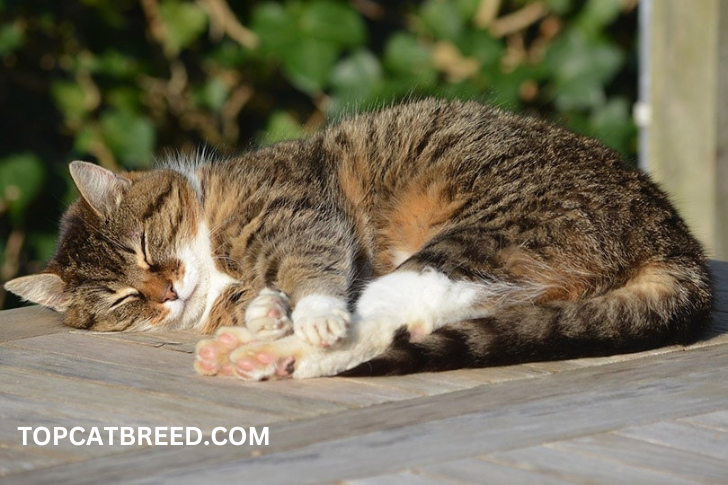
An important and common reason behind why does my cat twitch in her sleep, especially for kittens, is their rapidly developing nervous system. Have you noticed more pronounced twitches during sleep in your kitten? Quick, jerky movements are a natural part of their adorable kitten phase. As long as your kitten behaves normally when awake, these sleep-induced movements are harmless and contribute to the charm of their growth.
The early stages of a kitten’s life involve rapid development, and this extends to their nervous system. During sleep, kittens may exhibit more pronounced twitches as their bodies actively develop neural connections. While these movements can be more noticeable, particularly in younger cats, they are typically harmless. As kittens grow and their nervous system matures, these adorable sleep quirks often diminish. Enjoying these moments is part of appreciating your kitten’s journey from infancy to adulthood.
4-Muscle spasms that are uncontrollable
One of the crucial reasons for your cat’s sleep twitches lies in understanding the distinction between regular sleep activity and true muscle spasms. While mild twitching is normal during cat sleep, true muscle spasms are more vigorous and may indicate underlying issues. These could range from toxins and neurological concerns to pain or sleep disorders. Distinguishing between regular sleep activity and concerning spasms can be challenging, making it advisable to record a video for your vet’s review if you notice unusual movements.
Muscle spasms during cat sleep can sometimes be mistaken for ordinary twitches. However, these spasms are generally more intense and might indicate an underlying health issue. Causes can range from toxins to neurological problems. If you observe your cat experiencing frequent or severe muscle spasms during sleep, consulting your veterinarian is essential. Recording a video for your vet’s evaluation can provide valuable information for an accurate diagnosis and appropriate treatment.
5-Parasomnia in Cats
One common reason behind why does my cat twitch in her sleep is Parasomnia, encompassing abnormal sleep behaviors in cats. Though rare, Parasomnia challenges both owners and feline companions. Behaviors may include intense movement, growling, or hissing during sleep. Identifying causes like genetic factors, brain tumors, or metabolic diseases requires professional evaluation.
Addressing Parasomnia involves a thorough understanding of its root cause. Veterinarians conduct genetic testing, neurological assessments, and imaging studies for accurate diagnosis. Treatment plans, including medication, lifestyle modifications, or dietary changes, are then tailored to the cat’s needs. Medications like anti-seizure drugs may be prescribed.
Creating a stress-free sleep environment with a cozy bed and consistent routine is vital. Regular follow-ups ensure treatment efficacy. Timely intervention and supportive environments enhance the overall well-being of cats experiencing parasomnia, minimizing the impact of abnormal sleep behaviors on their lives.
6- Normal Sleep Cycles
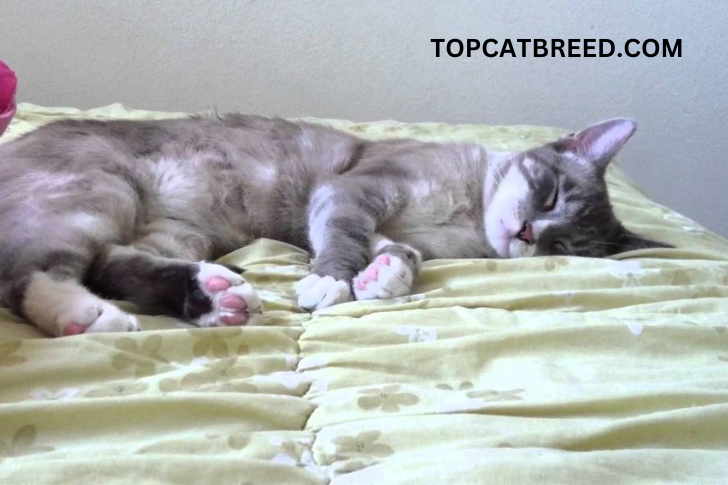
Understanding the normal sleep cycles of cats is vital to decipher the enigma of why cats twitch in their sleep. Cats, like humans, undergo various sleep phases, including Rapid Eye Movement (REM), where dreams unfold. These cycles are essential for their overall health and well-being.
Cats typically sleep between 12 to 16 hours daily, with kittens and senior cats having more extended sleep periods. Paying attention to your cat’s sleep patterns can provide insights into their health and help distinguish between normal sleep twitches and potential underlying issues.
7- Age-related Physical Activity
Age significantly influences a cat’s sleep patterns and behaviors. Kittens, for instance, experience more pronounced twitches during sleep due to their developing nervous system. Senior cats, on the other hand, may sleep up to 20 hours a day, with reduced mobility.
Understanding and accommodating age-related changes in physical activity contribute to a more harmonious coexistence with your feline companion. Adjusting your expectations based on your cat’s life stage helps foster a comfortable and supportive environment for their evolving needs.
8- Feline Hyperesthesia Syndrome
Feline Hyperesthesia Syndrome (FHS) stands as a mysterious yet common reason behind cats twitching in their sleep. This peculiar condition involves abnormal sensitivity in a cat’s skin, leading to episodes of twitching, excessive grooming, and other distinctive behaviors. While the exact cause remains elusive, theories point to brain disorders, tail trauma, muscle problems, or spinal disease.
Recognizing the symptoms of FHS and seeking veterinary advice is crucial for providing appropriate care and managing this enigmatic syndrome in feline companions.
Treatment of Hyperesthesia Syndrome
Identification of Triggers Observing and identifying potential triggers is the first step in managing FHS. Stress, changes in the environment, or specific allergens can exacerbate symptoms. Keeping a detailed record of episodes and potential triggers helps formulate an effective treatment plan.
Environmental Enrichment: Creating a stimulating and comfortable environment is crucial for cats with FHS. Provide engaging toys, scratching posts, and safe spaces where the cat can retreat. Regular play sessions and a consistent routine can reduce stress and alleviate symptoms.
Medical Intervention: In severe cases, medication may be recommended by a veterinarian. Anti-anxiety medications or drugs that modulate neural activity can help control symptoms. The choice of medication and dosage will be tailored to the individual cat’s needs.
Dietary Adjustments: Some cats with FHS may benefit from dietary changes. Specialized diets that support skin health and contain anti-inflammatory ingredients can contribute to symptom management.
Behavioral Therapy: Working with a veterinary behaviorist can be beneficial. Behavioral therapy aims to modify the cat’s response to triggers and reduce anxiety. Techniques such as desensitization and counter conditioning may be employed.
Regular Veterinary Check-ups: Regular veterinary monitoring is essential to assess the cat’s overall health and track the effectiveness of the treatment plan. Adjustments to medication or interventions may be necessary based on the cat’s response.
Understanding these factors can enhance the well-being of your feline friend, ensuring they enjoy restful sleep and a happy, healthy life.
9- Toxins or Medication Side Effects
The reasons behind why cats twitch in their sleep is a multifaceted exploration, and toxins or medication side effects stand as influential contributors. Cats may display peculiar sleep behaviors, including twitching, as a response to exposure to harmful substances. Identifying potential sources, such as plants, household chemicals, or specific medications, is crucial for proactive pet care.
Creating a safe environment involves vigilant monitoring of your cat’s surroundings and prompt intervention in case of any toxin exposure. Understanding the unintended consequences of environmental factors is essential for promoting a healthier and safer sleep environment for your feline companion. Regular veterinary consultations further contribute to proactive health management.
Should I wake my cat up if she’s twitching?
Waking your cat when she’s twitching during sleep is generally unnecessary. Cats, like humans, go through different sleep cycles, including Rapid Eye Movement (REM), where dreams occur. Twitching is often a natural part of this process and doesn’t necessarily indicate distress. If your cat seems comfortable and the twitching is occasional, let her sleep peacefully.
However, if there’s a sudden change in her twitching behavior, such as increased frequency or signs of distress, it’s advisable to consult with your veterinarian. Observing without disturbance is the first step, allowing you to gauge if the twitching is within normal parameters or if further investigation is needed for your cat’s well-being.
What should I do if my cat starts to twitch?
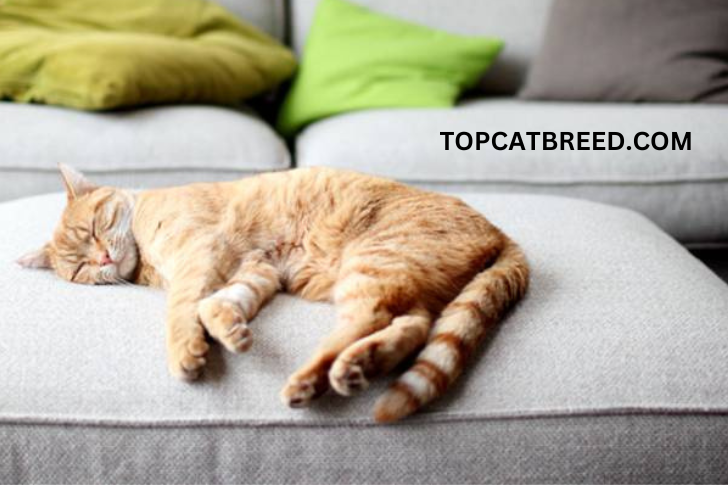
If you notice your cat exhibiting twitching behavior, it’s essential to approach the situation with a balanced perspective. Twitching during sleep is normal for cats, but changes in patterns or additional symptoms might warrant attention. Here’s a guide on how to handle this situation:
Observe Without Disturbing: Initially, observe your cat without waking her. Many times, twitching is harmless and part of their dream cycle. If the twitching doesn’t seem distressing and your cat appears comfortable, it might not require immediate intervention.
Assess Other Behaviors: Take note of any accompanying signs. If your cat is twitching excessively, making unusual vocalizations, or displaying signs of distress, it’s time to investigate further. Changes in behavior can be indicative of underlying health issues.
Check for External Factors: Examine your cat’s sleep environment. Ensure there are no disturbances, loud noises, or uncomfortable temperatures. Sometimes, external factors can influence your cat’s sleep patterns.
Consult Your Veterinarian: If you observe significant changes, especially if your cat is a senior or has pre-existing health conditions, consult your veterinarian. Persistent twitching, especially if it’s a new behavior, might be a symptom of an underlying problem like seizures or neurological issues.
Record Video Evidence: If possible, record a short video of the twitching behavior. This can provide valuable information for your veterinarian. Sometimes, what might seem alarming in a description can be better assessed through visual evidence.
Maintain Regular Vet Check-ups: Even if the twitching seems benign, regular veterinary check-ups are crucial. Your vet can monitor your cat’s overall health and provide guidance on any changes in behavior.
Create a Comfortable Sleep Environment: Ensure your cat has a quiet, comfortable, and safe place to sleep. Cats thrive on routine, so maintaining a consistent sleep environment can contribute to their well-being.
Consider Age and Health Factors: Older cats may experience changes in sleep patterns. Understanding your cat’s age and any existing health conditions can help contextualize the twitching behavior.
Remember, each cat is unique, and what might be normal for one might not be for another. Trust your instincts as a pet owner, and if in doubt, seek professional advice from your veterinarian. Prioritizing your cat’s well-being involves a combination of observation, understanding their individuality, and proactive veterinary care.
How Much Sleep Do Cats Get Per Day?
Cats are champion sleepers, spending a significant portion of their lives in slumber. On average, cats sleep between 12 to 16 hours a day. This extensive sleep duration is essential for their overall health, providing necessary rest for physical and mental well-being.
Kittens and senior cats tend to sleep even more, with kittens requiring substantial rest for growth and development, and senior cats embracing longer periods of sleep due to reduced physical activity. Understanding your cat’s sleep needs ensures you can create a comfortable environment that supports her natural sleep patterns.
Final THOUGHTS
In wrapping up, your cat’s sleep twitches reveal much about their health and habits. Whether it’s the charm of their dreams, an itch from allergies or the natural quirks of a developing nervous system, each twitch has its own tale. While most are harmless, some might need a vet’s check. Understanding and appreciating these nuances helps you ensure your cat enjoys peaceful sleep. When in doubt, consulting your vet provides personalized care for your feline friend’s well-being. Sweet dreams to your furry companion!

